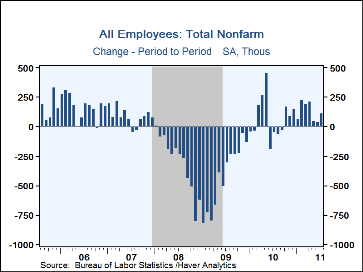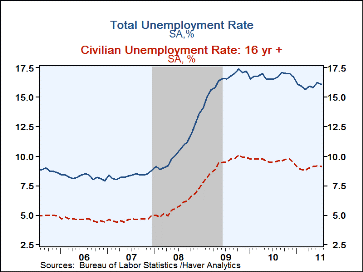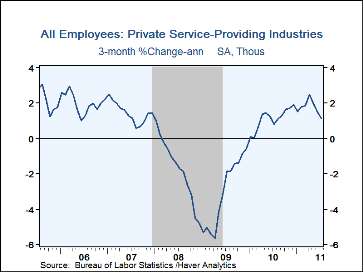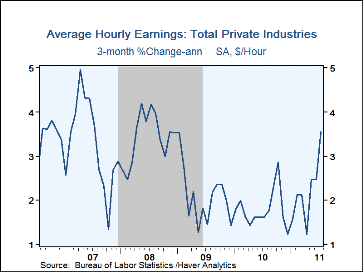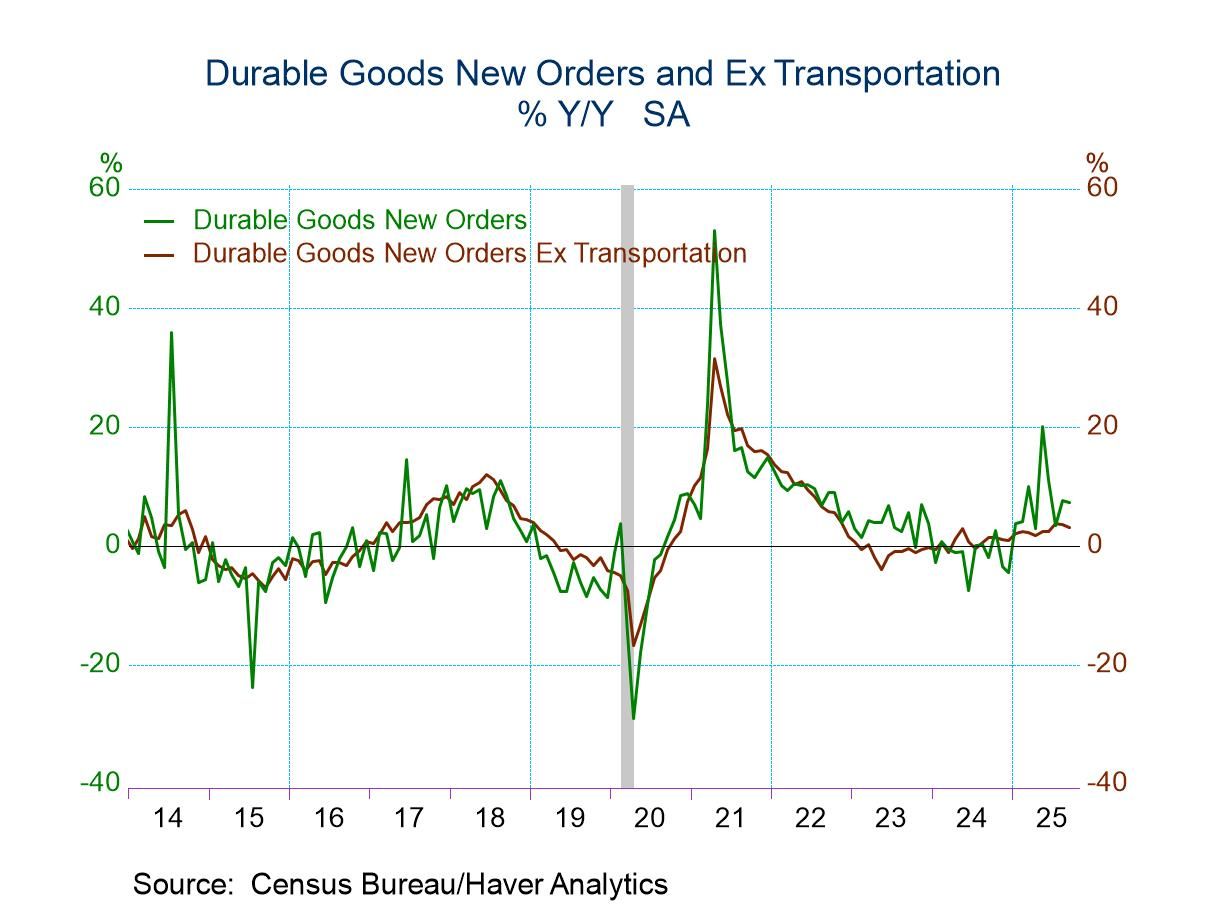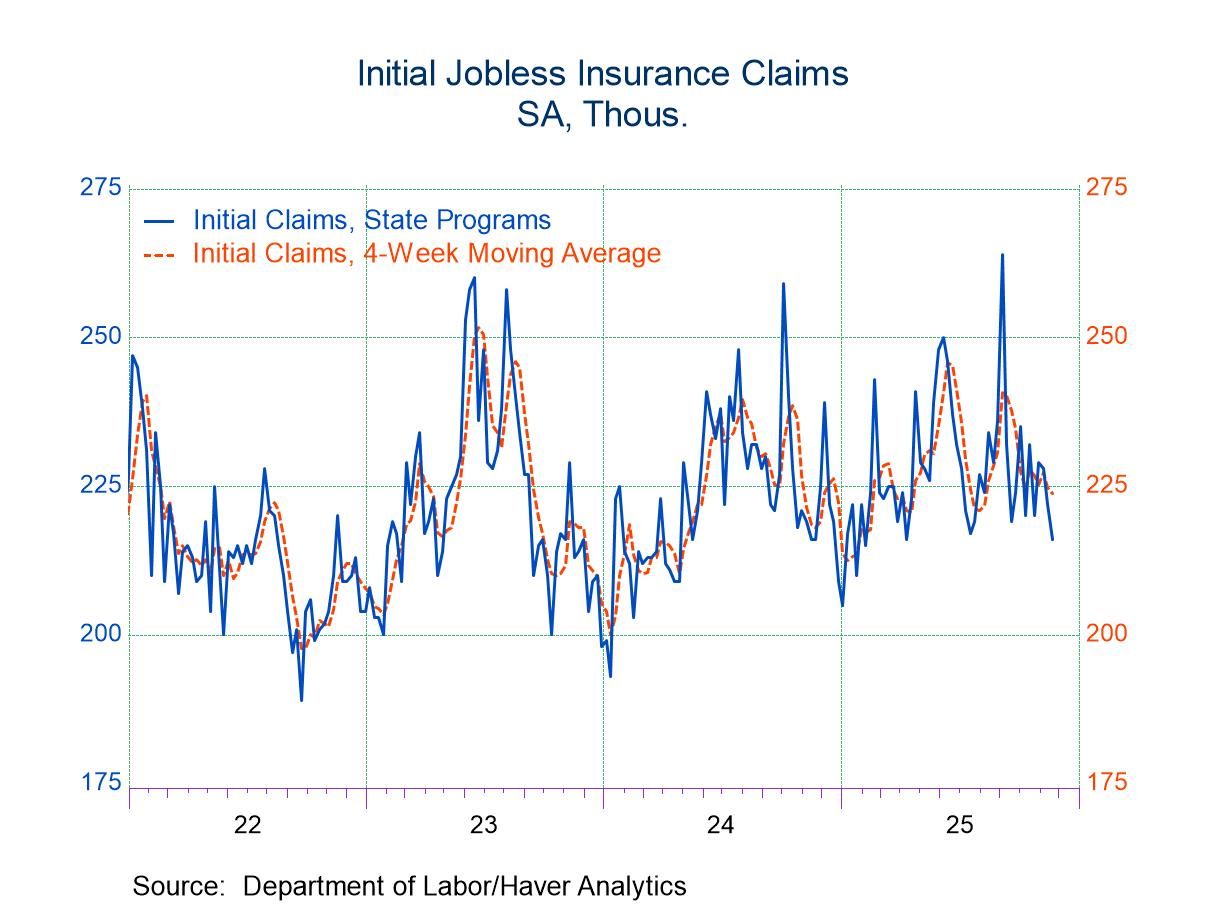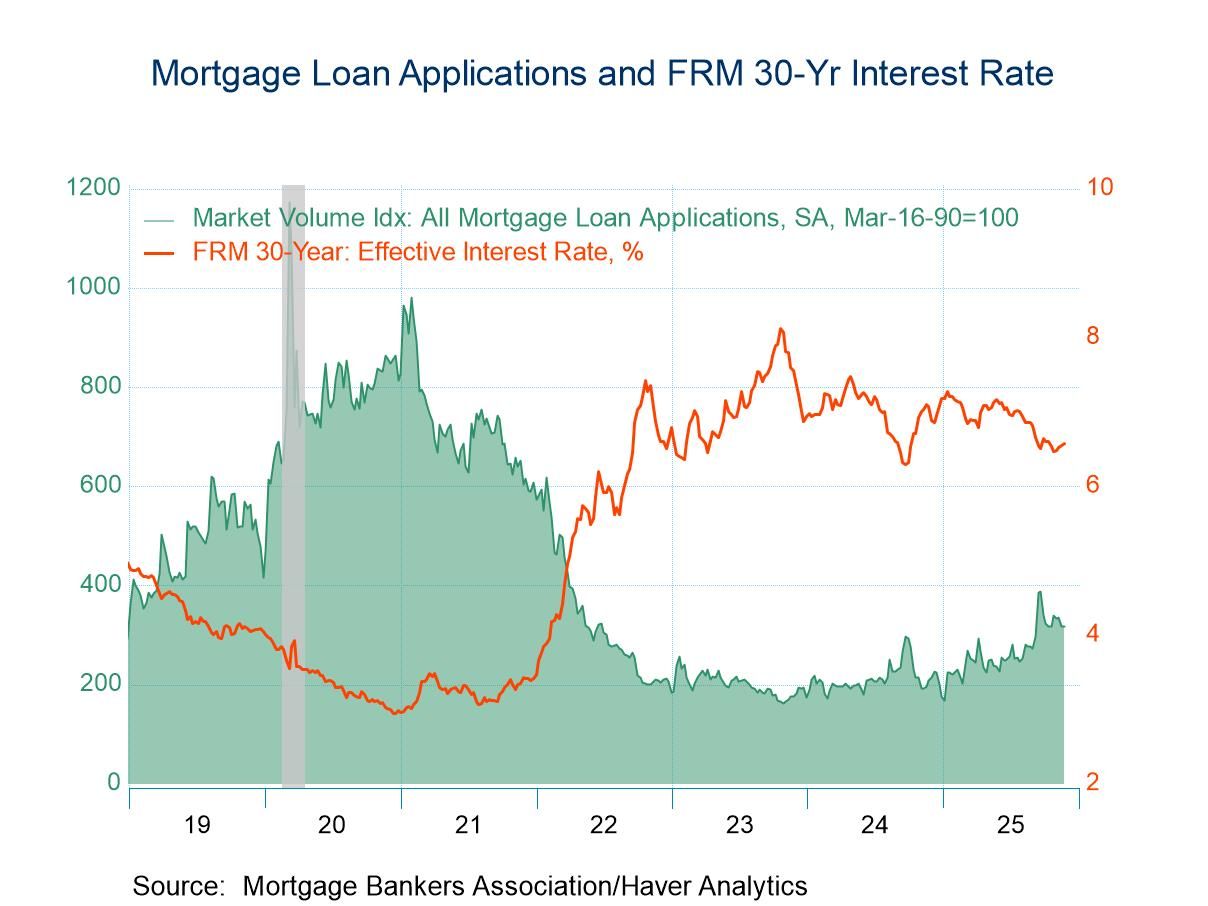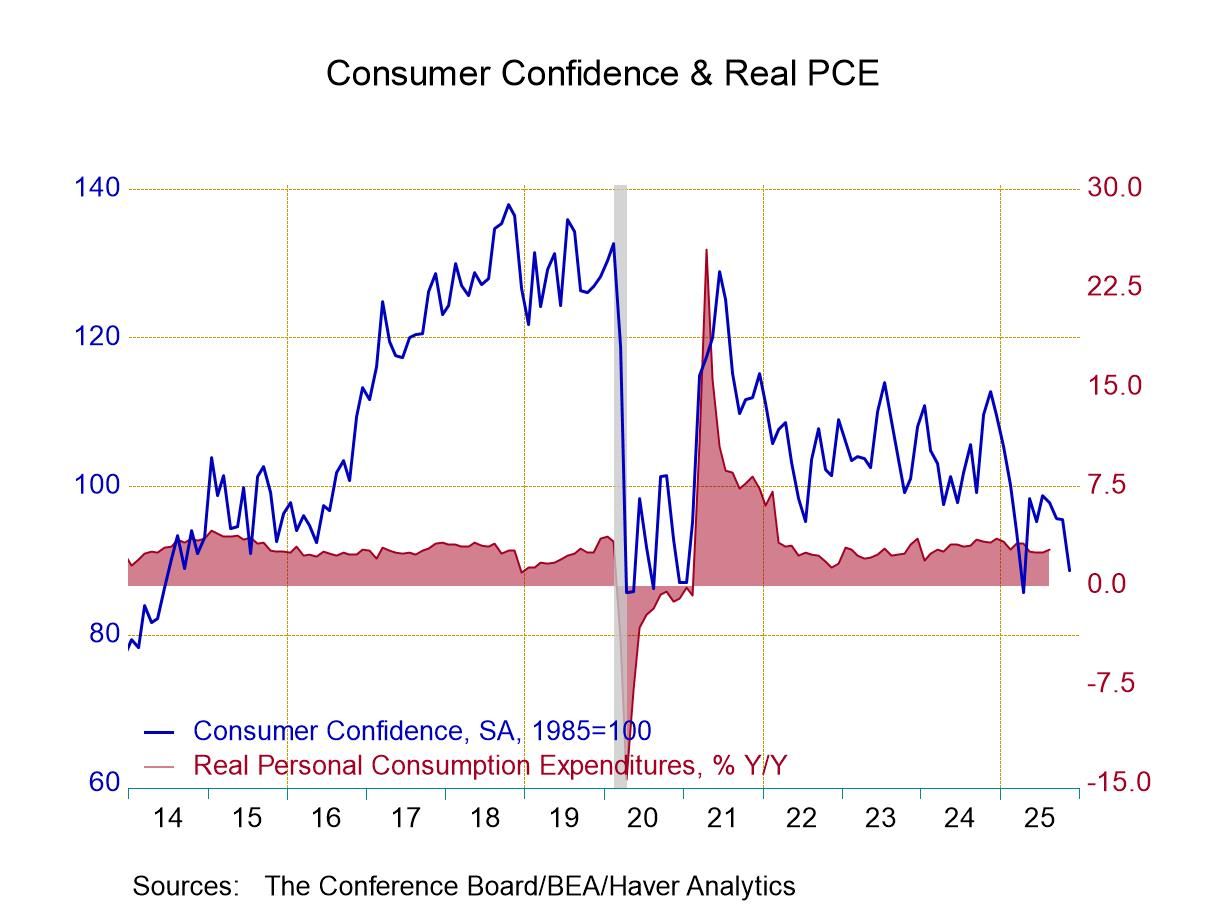 Global| Aug 05 2011
Global| Aug 05 2011U.S. Payroll Increase Is A Positive Surprise While Jobless Rate Slips
by:Tom Moeller
|in:Economy in Brief
Summary
Finally, an improved jobs report after two months of disappointment. Nonfarm payrolls rose 117,000 during July following increases during the prior two months that were revised upward by a collective 56,000. The latest gain compared [...]
Finally, an improved jobs report after two months of disappointment. Nonfarm payrolls rose 117,000 during July following increases during the prior two months that were revised upward by a collective 56,000. The latest gain compared to an expected 90,000 according to Action Economics. Modest improvement amongst the payroll categories was widespread.
Payroll employment increased 117,000 last month following
upwardly revised gains of 46,000 and 53,000 during June and May,
respectively. The rise was led by a 112,000 increase in private service
sector employment which greatly improved on the gains of the prior two
months. Stronger monthly increases in education (2.1% y/y), professional
& business services (3.1% y/y) and retail trade (1.1% y/y) led the
rise. 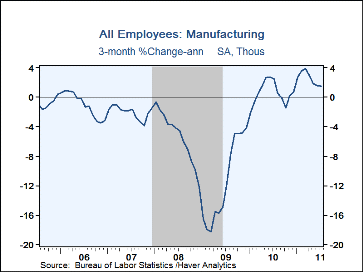 Temporary help employment rose negligibly m/m (7.6% y/y). Government
sector employment continued the decline which began in earnest in June of
last year. The 37,000 drop (-2.4% y/y) was led by 23,000 fewer state gov't
(-1.7% y/y) jobs. Local employment fell 16,000 (-1.7% y/y) but federal
gov't jobs rose 2,000 (-6.8% y/y).
Temporary help employment rose negligibly m/m (7.6% y/y). Government
sector employment continued the decline which began in earnest in June of
last year. The 37,000 drop (-2.4% y/y) was led by 23,000 fewer state gov't
(-1.7% y/y) jobs. Local employment fell 16,000 (-1.7% y/y) but federal
gov't jobs rose 2,000 (-6.8% y/y).
The length of the average workweek held m/m at 34.3 hours though that was down versus April and May. Hours worked in the goods producing sector were lower at 39.8 while service sector hours held steady at 33.2.
Average hourly earnings increased 0.4% (2.3% y/y) which was the strongest monthly gain since January. Goods producing earnings led the rise with a 0.6% increase (2.4% y/y) while earnings in the private service sector rose 0.4% (2.2% y/y). Education earnings rose 0.6%, 3.4% y/y.
From the household sector jobs numbers, the unemployment rate slipped to 9.1% versus an expected 9.2%. The latest was down from the 2009 monthly high of 10.1%. However, the July decline was due to another sharp drop in the labor force. The 193,000 decline (-0.3% y/y) exceeded the 38,000 drop (+0.2%) y/y in household sector employment. The total unemployment rate, including those who are marginally attached or working part-time for economic reasons, notched down with the total to 16.1%.
The weakness of the labor force numbers reflects a drop in the participation rate to 63.9%, the lowest since 1983. Fully 86.443M individuals chose not to be in the labor force. Amongst those still in the labor force, 4.492M have been unemployed for 52 weeks or longer. The average duration of unemployment was a record 40.4 weeks.
The figures referenced above are available in Haver's USECON database. Additional detail can be found in the LABOR and in the EMPL databases. The expectation figures are from Action Economics and are in the AS1REPNA database.
| Employment: (M/M Chg., 000s) | Jul | Jun | May | Y/Y | 2010 | 2009 | 2008 |
|---|---|---|---|---|---|---|---|
| Payroll Employment | 117 | 46 | 53 | 1.0% | -0.7% | -4.4% | -0.6% |
| Previous | -- | 18 | 25 | -- | -0.5 | -4.3 | -0.6 |
| Manufacturing | 24 | 11 | 7 | 1.4 | -2.7 | -11.6 | -3.4 |
| Construction | 8 | -5 | 3 | 0.6 | -8.1 | -16.0 | -6.1 |
| Private Service Producing | 112 | 64 | 79 | 1.7 | -0.1 | -3.5 | -0.2 |
| Government | -37 | -34 | -46 | -2.4 | -0.3 | 0.3 | 1.3 |
| Average Weekly Hours | 34.3 | 34.3 | 34.4 | 34.2 (Jul.'10) |
34.1 | 33.9 | 34.5 |
| Average Hourly Earnings (%) | 0.4 | 0.1 | 0.3 | 2.3 | 2.4 | 3.0 | 3.8 |
| Unemployment Rate(%) | 9.1 | 9.2 | 9.1 | 9.5 (Jul.'10) |
9.6 | 9.3 | 5.8 |
Tom Moeller
AuthorMore in Author Profile »Prior to joining Haver Analytics in 2000, Mr. Moeller worked as the Economist at Chancellor Capital Management from 1985 to 1999. There, he developed comprehensive economic forecasts and interpreted economic data for equity and fixed income portfolio managers. Also at Chancellor, Mr. Moeller worked as an equity analyst and was responsible for researching and rating companies in the economically sensitive automobile and housing industries for investment in Chancellor’s equity portfolio. Prior to joining Chancellor, Mr. Moeller was an Economist at Citibank from 1979 to 1984. He also analyzed pricing behavior in the metals industry for the Council on Wage and Price Stability in Washington, D.C. In 1999, Mr. Moeller received the award for most accurate forecast from the Forecasters' Club of New York. From 1990 to 1992 he was President of the New York Association for Business Economists. Mr. Moeller earned an M.B.A. in Finance from Fordham University, where he graduated in 1987. He holds a Bachelor of Arts in Economics from George Washington University.


